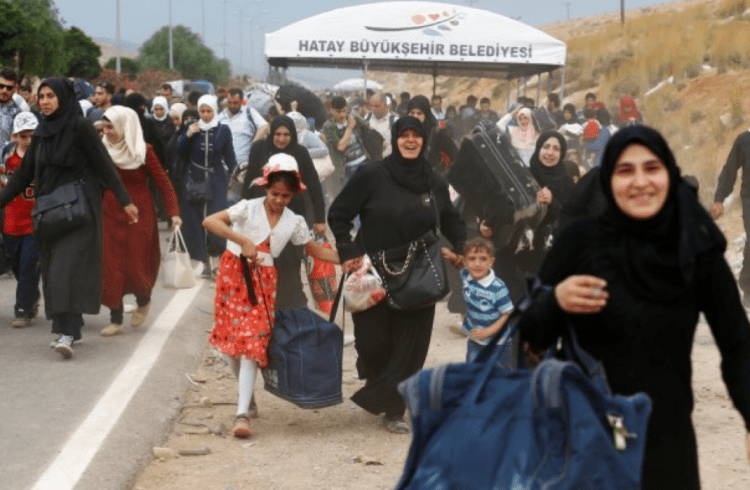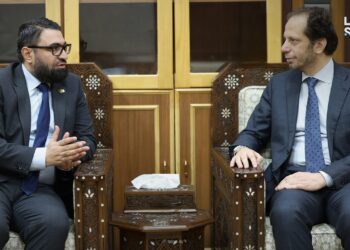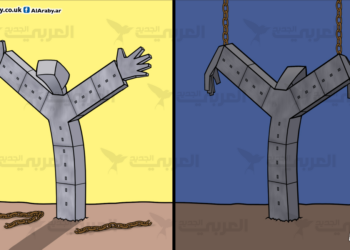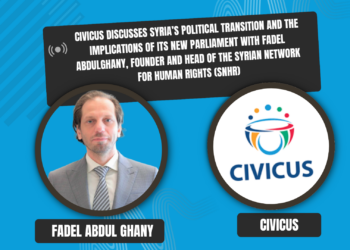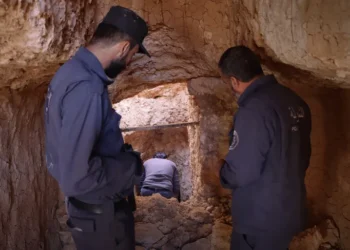The fall of the Bashar al-Assad regime on December 8, 2024, marked a turning point in the protracted Syrian refugee crisis, removing the major political obstacle that had kept millions of Syrians in exile for more than a decade.
This political shift sparked an immediate response; within six months, some 450,000 refugees returned across international borders to their homes, and 1.2 million internally displaced persons (IDPs) began their journey back to their areas of origin. However, these movements, while seemingly significant, represent only a small percentage of the 6.8 million refugees and 6.9 million IDPs, which together constitute one of the largest forced displacement crises in modern history.
This emerging phenomenon of return requires critical analysis within a multidimensional framework. The Syrian case demonstrates that political transition, while necessary, is not sufficient to enable sustainable return in contexts of protracted forced displacement.
The concept of “voluntary, safe, and dignified return”—as enshrined in international refugee law and humanitarian practice—faces significant challenges when applied in contexts where state apparatuses have been systematically dismantled, social contracts have been violently severed, and economic structures have been destroyed. Syria embodies what might be termed the “infrastructure of displacement”: a situation in which physical destruction, institutional collapse, and social disintegration act as self-perpetuating barriers to return, persisting even after regime change.
This article argues that the process of Syrian refugee return after the fall of Assad highlights structural gaps in international frameworks dealing with protracted forced displacement. While the political transition removed the most significant obstacle to return, it also exposed a complex web of material, legal, social, and psychological challenges that undermine the effectiveness of traditional humanitarian responses. These challenges—which range from simple issues such as property documentation to more profound ones such as the implementation of transitional justice—reveal that return is not a single event, but rather a multifaceted process requiring the simultaneous implementation of physical reconstruction, institution-building, economic recovery, and social reform. The Syrian experience thus calls for a reconceptualization of “refugee return,” one that goes beyond initial political criteria to encompass the full range of conditions necessary for genuine reintegration.
The gender dimensions of Syrian refugee return go beyond property rights to encompass complex intersections between security, economic vulnerability, and social status.
The Political Economy of Return
The material conditions facing Syrian returnees highlight a profound crisis in state capacity, far beyond the challenges of traditional post-conflict reconstruction. The confluence of destroyed infrastructure, collapsed economies, and fragmented legal frameworks creates what can be described as a “triple bind” for returnees: they cannot reclaim their property without documentation, they cannot access these documents without functioning institutions, and these institutions cannot be rebuilt without a fundamental settlement regarding the distribution of power and resources.
The Property Rights and Documentation Crisis: Legal Pluralism in Practice
Survey data shows that only 20% of Syrian refugees possess documentation proving their ownership of housing, land, or property, reflecting the depth of the property rights crisis facing returnees. This documentation crisis intersects with gender-based legal frameworks that increase the vulnerability of female returnees. The patriarchal nature of Syrian property law—whereby women’s legal identity remains tied to their male relatives—poses additional obstacles for female-headed households seeking to reclaim their property. The interplay between social norms and the loss of official records leads to a form of legal exclusion that not only dispossession but also calls into question women’s ability to acquire a true “economic citizenship” within the post-conflict system.
Gender-Related Vulnerabilities: Intersecting Challenges in Return Processes
The gender dimensions associated with Syrian refugee return go beyond property rights to encompass complex intersections between security, economic vulnerability, and social status. Female-headed households—which constitute a significant proportion of returnees due to the death, disappearance, or continued displacement of males—face particular challenges that are not adequately addressed by traditional return frameworks. These challenges are manifested in several interconnected factors: the absence of male protection in patriarchal security environments, economic marginalization within labor markets organized along gender lines, and the social stigma associated with women’s freedom of movement and decision-making autonomy.
The security concerns of returning women are not limited to generalized violence; they also include gender-specific threats. With the collapse of traditional protection mechanisms and the militarization of masculinity during conflict, environments have emerged in which sexual violence persists as an extension of patterns of war and a tool of social control. This reality is compounded by the absence of effective justice systems. Traditional informal justice mechanisms tend to prioritize community harmony over women’s individual rights, while formal systems remain either closed to women or lack public trust.
Widows returning to Syria are faced not only with the practical challenges of reconstruction in the absence of male support, but also with social systems that view their autonomy as a threat to the existing moral order. The destruction of economic sectors traditionally dominated by women—such as home production and agricultural processing—has eliminated their familiar sources of livelihood. Concurrently, the expanding informality of the economy has created new vulnerabilities, with women working in these sectors lacking legal protection and facing potential exploitation. The lack of childcare infrastructure further restricts women’s economic participation, while cultural norms that restrict women’s mobility further complicate their access to emerging economic opportunities.
The conflict’s most lethal material legacy is manifested in the contamination of unexploded ordnance.
The Evolving Security Landscape: From Monopolized to Dispersed Violence
The post-Assad security environment is witnessing a radical shift in the nature of threat and protection. Whereas the violence of the previous regime relied on centralized mechanisms of surveillance, detention, and systematic repression, the current landscape is characterized by what Mary Kaldor has described as the hallmarks of “new wars”: decentralized violence, a blurring of the line between civilian and military, and an overlap between state and non-state actors.
The material legacy of the conflict is most lethally manifested in the contamination of unexploded ordnance. Data from the Syrian Network for Human Rights indicates that 220 civilians, including 41 children, were killed in early 2025 alone as a result of cluster munition remnants and landmines. This reality illustrates how the violence of the past continues to produce insecurity in the present. This contamination represents what Rob Nixon calls “slow violence”—a form of delayed destruction whose effects extend beyond the end of combat operations. The uneven spatial distribution of this contamination, concentrated in areas of intense combat, creates a geographic hierarchy of levels of safety, affecting patterns of return and perpetuating inequality between those who can return to cleared areas and those who remain exposed to ongoing risks.
Economic Destruction and Livelihood Systems:
The collapse of the Syrian economy—with more than 90% of the population living below the poverty line and 12.9 million people experiencing food insecurity—represents a structural transformation that goes beyond cyclical economic crises. The destruction of productive capacity, particularly in the agricultural sector, as evidenced by the extensive damage to olive groves and irrigation systems, points to the disintegration of livelihood systems that have historically formed the social and economic foundation of Syrian society. This destruction manifests itself through several mechanisms: the physical destruction of productive assets, the disintegration of market networks, the erosion of human capital due to forced migration, and the collapse of the financial intermediation system.
Syria’s severe liquidity crisis highlights that economic reconstruction requires more than just capital injections. The collapse of the banking system—resulting from elite capital flight, infrastructure destruction, and international isolation—has severed the vital link between savings and investment, disrupting traditional mechanisms for economic recovery. This financial exclusion forces returnees to resort to informal economic arrangements that, while temporarily effective, provide immediate survival strategies but also hinder the accumulation processes necessary for sustainable economic recovery.
The collapse of educational infrastructure, in particular, reveals how physical destruction intersects with the complexities of governance. The departure of qualified teachers, the destruction of schools, and the fragmentation of curricula pose obstacles that go beyond simply rehabilitating buildings.
Infrastructure as a Political Space:
The deterioration of Syria’s physical infrastructure—where only 57% of hospitals and 37% of primary healthcare centers are functioning—is not simply a failure to provide services; it reflects a shift in the way power is exercised. Infrastructure, as described by science and technology studies theorists, is a “socio-technical system” that involves political relations embodied in material form. The selective destruction of water networks, schools, and healthcare facilities during the conflict was a deliberate strategy by the Assad regime to control the population; therefore, reconstruction necessarily involves a re-establishment of political authority and social contracts.
The collapse of educational infrastructure, in particular, reveals how physical destruction intersects with the complexities of governance. The departure of qualified teachers, the destruction of schools, and the fragmentation of curricula pose obstacles that go beyond the simple rehabilitation of buildings. The integration of children who were educated in foreign curricula during displacement into a reconstructed Syrian education system raises questions about national identity, social cohesion, and the state’s role in social reproduction. Similarly, the collapse of the healthcare system—exacerbated by the exodus of medical personnel—reveals that rebuilding infrastructure requires simultaneously addressing human capital, institutional frameworks, and political consensus capable of attracting and retaining qualified talent.
Psychosocial Dimensions: Trauma, Trust, and Social Capital
The psychological context surrounding return reveals profound challenges that go beyond individual disorders to collective trauma and social disintegration. Research indicates that the prevalence rates of post-traumatic stress disorder (PTSD)—55.5%—and depression (33.5%—among Syrian refugees reflect a serious mental health crisis. However, these rates represent only part of the broader psychosocial landscape shaping the reality of return, which includes the erosion of social trust, the collapse of community solidarity mechanisms, and the transformation of social identities due to the experience of displacement.
The concept of “social capital”—the networks of trust and exchange that enable collective action—provides an analytical framework for understanding these challenges. The Syrian conflict has systematically destroyed patterns of solidarity within groups and undermined relations between different groups. The weaponization of sectarian, ethnic, and political identities during the conflict has transformed once-integrated and integrated communities into fragmented units characterized by mutual suspicion. This erosion of social capital occurs through multiple mechanisms: from betrayal by neighbors turned informants, to the manipulation of communal identities as a means of survival, to the physical separation of communities due to displacement.
The experience of Syrian refugee returns demonstrates the limitations of treating return as a solvable relief problem, rather than a long-term process requiring multi-level international and national support.
Reconstruction Aid Policies
The severe shortfall in funding for Syria’s reconstruction—with only $71 million pledged out of the $575 million requested by the UNHCR for return programs—reflects deeper contradictions in the structure of the post-conflict international political economy. This financial shortfall cannot be explained simply by donor fatigue or competing priorities; rather, it intersects with complex geopolitical calculations, existing sanctions regimes, and shifting concepts of sovereignty and the terms of international aid.
Transitional Justice: The Unfulfilled Promise of Accountability
The absence of comprehensive transitional justice mechanisms is one of the most significant obstacles to achieving sustainable return and genuine social reform. Despite the establishment of a transitional justice committee, the tentative and fragile nature of these efforts leaves critical issues such as accountability, truth, and reconciliation unaddressed.
Conclusion
The analysis presented in this article suggests that sustainable return goes beyond the so-called triad of “voluntary, safe, and dignified” return to be embodied in “regimes of return”—complex networks of material conditions, institutional capacities, social relations, and psychological potentials that enable or constrain reintegration processes. The Syrian case demonstrates how these elements intertwine in complex reciprocal relationships: property rights cannot be restored without effective institutions, those institutions cannot function without a minimum level of security, such security cannot be guaranteed without social trust, and social trust cannot be established without addressing trauma and ensuring transitional justice. This overlap suggests that any interventions limited to a single dimension—whether infrastructure reconstruction, economic support, or reconciliation programs—will be insufficient if these linkages are not understood as part of an interconnected system.
Ultimately, the experience of Syrian refugee return demonstrates the limitations of treating return as a solvable relief problem, rather than a long-term process requiring multi-level international and national support. The depth of the destruction—physical, institutional, and social—means that sustainable return will not be achieved within a few years, but will require generations of sustained action. This time horizon requires political frameworks capable of sustaining momentum and engagement, transcending electoral cycles and donor interests, to establish sustainable support mechanisms that recognize return as a social reconstruction project, not simply an emergency humanitarian response.
Thus, the Syrian case embodies both a unique tragedy and a global warning: in an era of protracted conflicts that produce long-term displacement, it is imperative that the international community develop new conceptual and practical tools commensurate with the complexity of return. The alternative—the continuation of partial responses that merely treat symptoms and ignore structures—threatens to perpetuate a state of limbo, with refugees trapped between an irretrievable past and an unattainable future. For the millions of Syrians contemplating return, as well as for the international system charged with protecting them, the realization of this right transcends the fate of individuals and expresses the possibility of rebuilding shattered societies in an era of systematic destruction.
